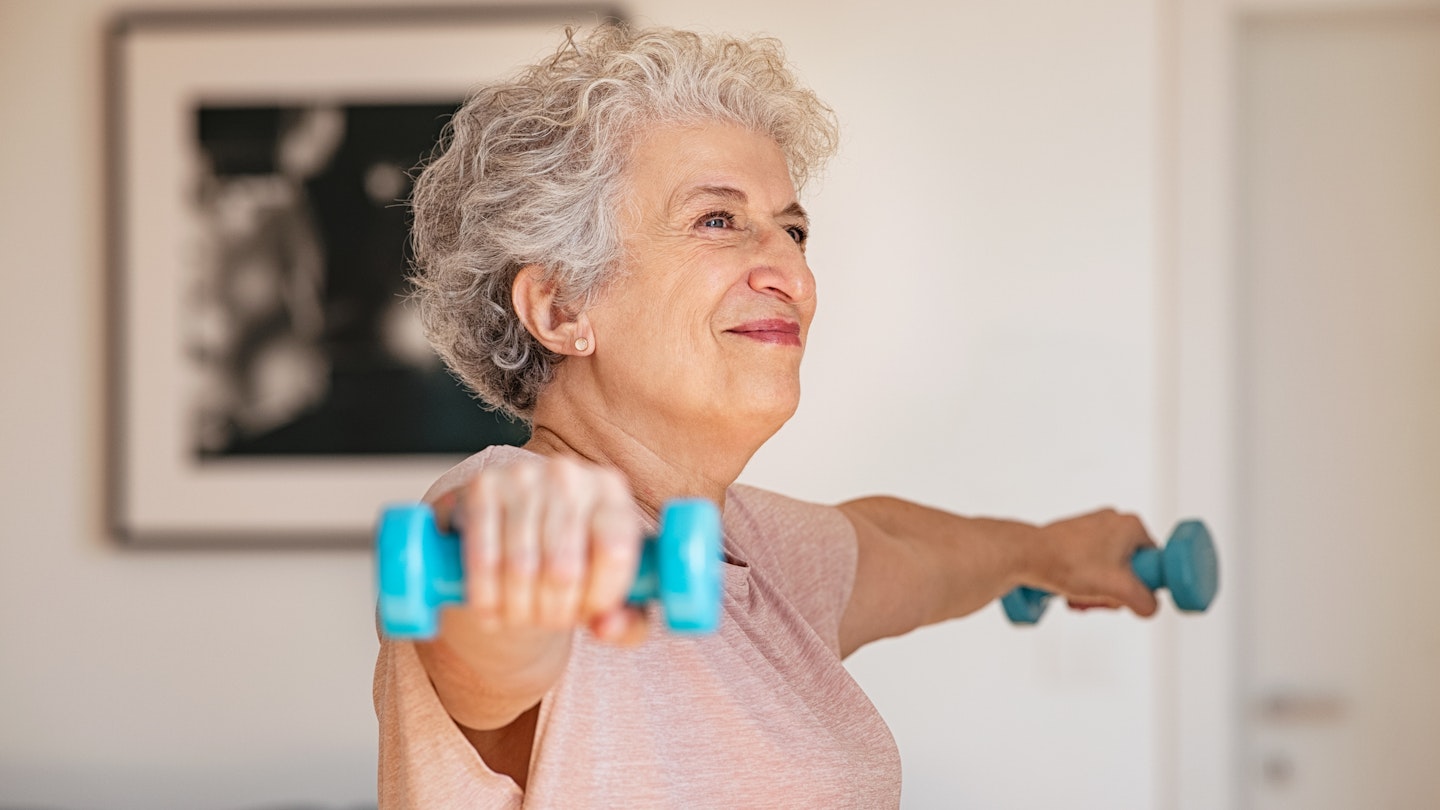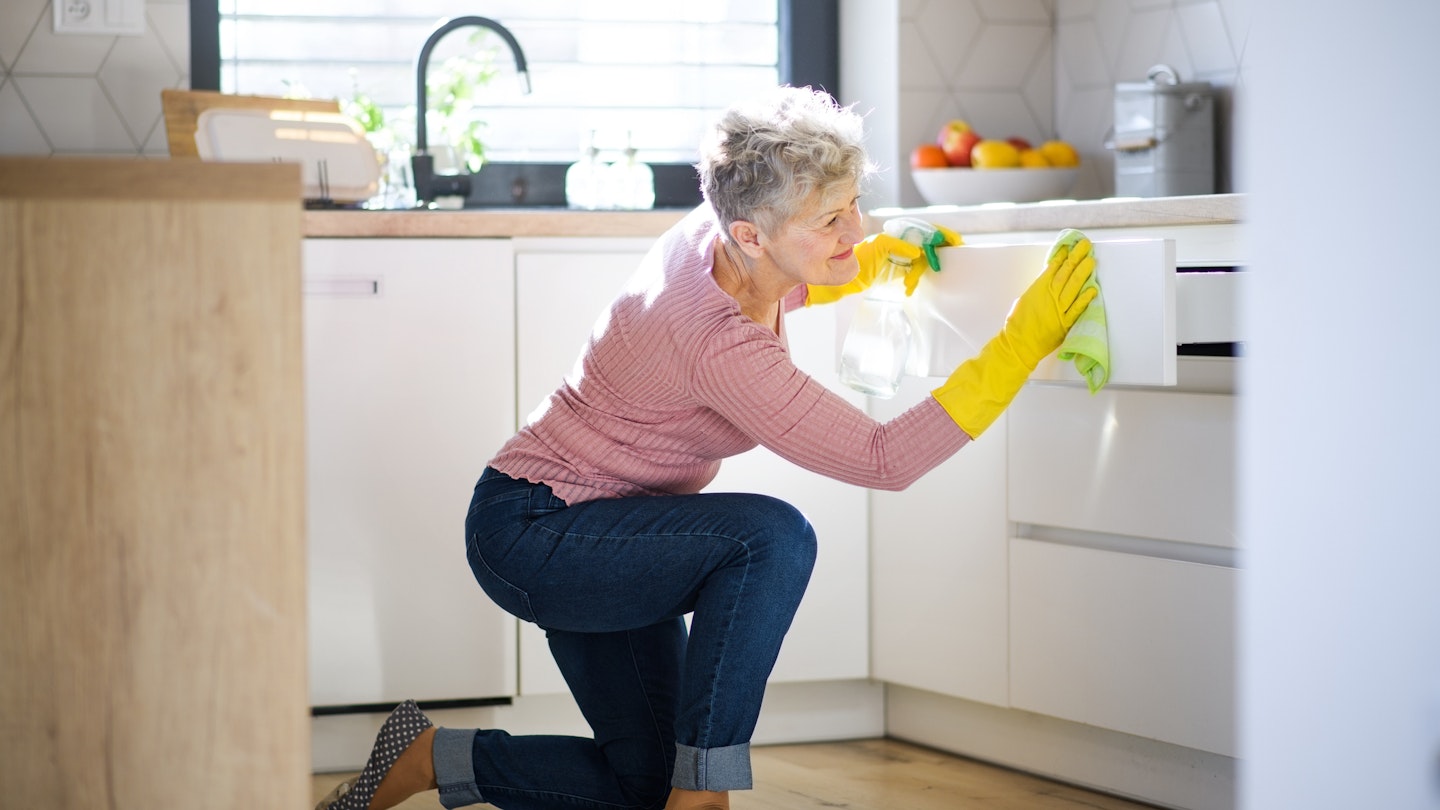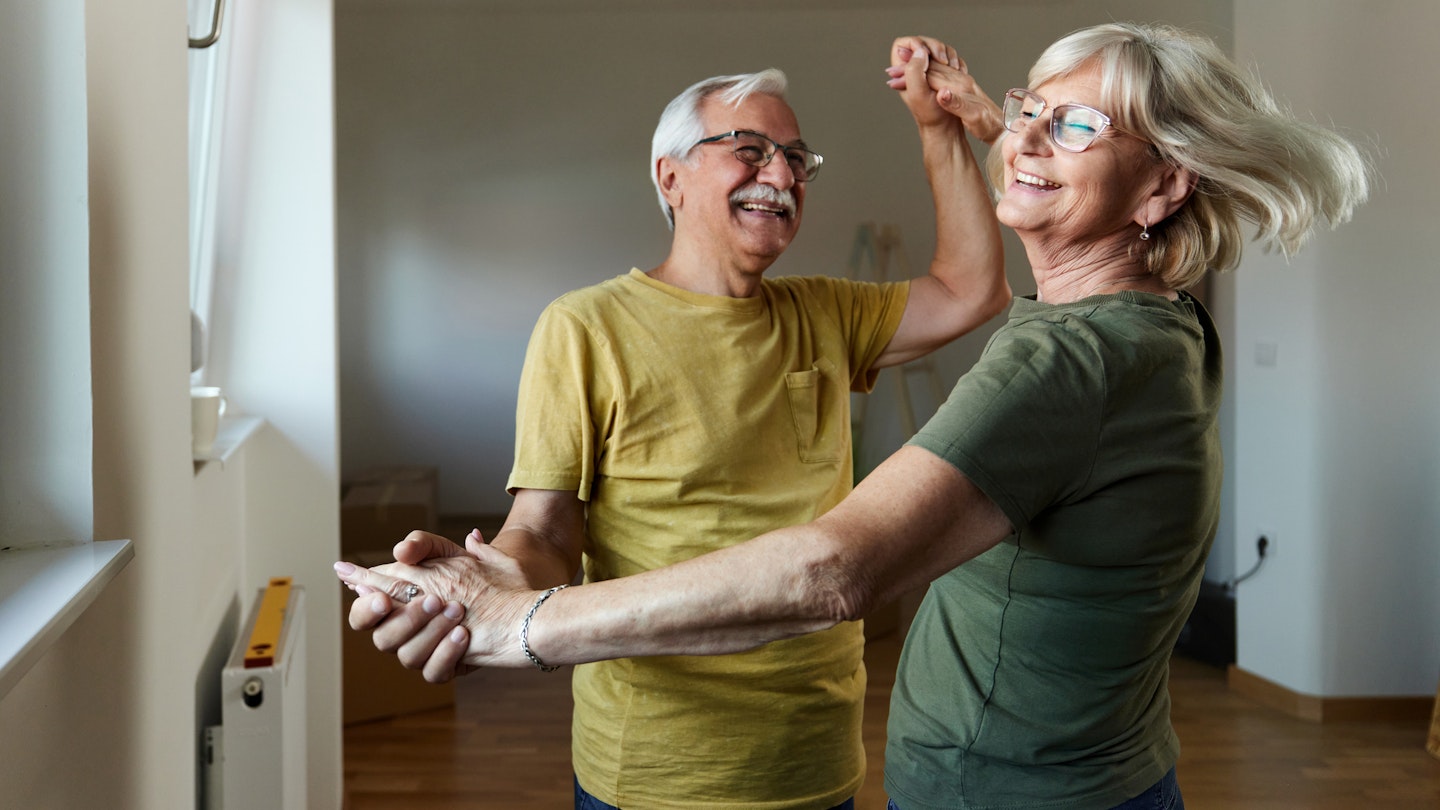Physiotherapist Kate Sheehan explains what exercise snacking is and how it can improve your health in just five minutes.
You know you need to build more exercise into your daily life but you’re not sure where to find the time or how to start. Sound familiar? Allow me to introduce you to exercise snacking, a way of becoming fitter and healthier that sadly has nothing at all to do with actual snacks.
It is, however, an easy, manageable way to become stronger, protect against many health conditions and stop the feelings of guilt that you’re not doing enough. As we age, loss of muscle mass and strength can reduce independence – something no one wants to face. However, the thought of hours in a gym, running miles or attending multiple fitness classes per week can feel overwhelming. Exercise snacking, however, can change all of that.
What is exercise snacking?

Exercise snacking refers to breaking exercise up into short, manageable bursts throughout the day – as little as 20 seconds or as long as 10 minutes. Current NHS exercise guidelinesare for us to achieve 150 minutes of moderate intensity exercise per week, with at least two sessions of strength work, such as using resistance bands or weight training at home. Exercise snacking suggests we can do this in short burst rather than long sessions, as Kate Sheehan, occupational therapist for Stannah, explains:
“Studies have shown that little and often takes the win. Doing smaller, more manageable sessions of physical activity is as good, if not better than, longer bouts of exercise. Including smaller bouts of activity and fitting physical activity in our everyday lives is more realistic, achievable, and enjoyable, especially for those of us who don’t typically enjoy exercise. By making exercise habitual and embedding it into our daily routine, we are more likely to keep doing it. “
How long should exercise snacks be?

Research has shown that improvements to health can be made with exercise bursts as short as 20 seconds – for example climbing the stairs instead of taking the lift. Over time, this all adds up and goes a long way to improving heart health.
However, for real, tangible benefits and especially if you’re trying to lose weight, aim for ten minute bursts.
This might be some chair exercises at home, or it might be a brisk walk to the bus stop. You can even exercise vigorously while doing everyday chores – cleaning the bathroom, doing the vacuuming, or even carrying the shopping in from the car all count!
Does exercise snacking work?
In short, yes! It’s been proven that getting your 150 minutes of activity per week is what matters, whether that’s doing 2 hour long sessions and one 30-minute walk, 5 x 30-minute sessions Monday - Friday, or ten minute bursts over 7 days a week. What matters is that you do it, and that you do it well.
Give those ten-minutes your all. Focus, put all your effort into whatever it is you’re doing, and then you’ll get much better results. We’re aiming to support health and mobility, prevent health conditions and increase longevity. Exercise snacking will do this.
Exercise snacking for weight loss
If you want to lose weight, then exercise snacking will help boost your metabolism, which is key to dropping the pounds. In fact, post-menopausal women are far better to focus on metabolism than weight loss. Moving more often is a fantastic way to convince our bodies to burn more calories throughout the day, even while sleeping. So, make it a priority to get up and move for 5-10 minutes every hour at least, and you’ll be glad you did.
Don’t forget, if weight loss is your primary goal you’ll also need to eat in a calorie deficit i.e. eat less calories than you burn.
What is exercise snacking for seniors?
Exercise snacking is applicable for anyone of any age, you just need to tailor it to your own ability. Incorporating some form of strength work is key, so you might like to try easy at-home exercises you can do in ten minutes, or learn how to use dumbbells.
If you know you have issues with joints or mobility, it can be a good idea to give those particular areas some focus for a few ten minute sessions, such as trying some knee strengthening exercises, or some mobility exercises. Alternatively, if you want to focus on toning up your upper body, you could learn how to get rid of bingo wings or try my pick of the best bicep exercises.
Exercise snacking instructions

It’s easy to say do some movement for five or ten minutes a few times a day, but that’s no good if you don’t know how to start. Kate Sheehan shares her top tips:
Focus on muscle strengthening exercise
“As we age, we experience a decrease in muscle mass, size, and strength, as our muscles produce less force. A fitness survey conducted by Don McCauley showed that 55% of people over 65 did not have enough quad and glute strength to rise from an armchair unaided. With our increased sedentary lifestyles and the belief that we will experience limited strength and mobility in older age, these numbers make sense. However, it is never too late to build muscle mass and strength.
By doing twice weekly muscle strengthening exercises, we can continue to live independently as we get older, as well as sustain blood glucose levels; improve balance and maintain body weight as building muscles uses energy and improves metabolism; improve our mental fitness; and fight off cancer (strength training twice weekly can reduce cancer overall by almost a third, 31%).
This does not need to be lifting weights in the gym but could include using our body weight or daily objects, such as bicep curls using shopping bags or tinned foods, doing calf raises whilst waiting for the kettle to boil, toe raises while talking on the phone, or side leg raises while working at a standing desk, which is a great way to work our side hip muscles that may help prevent falls.”
Keep moving - walking could save your life
“Everyone seems to think that running is better than walking when it comes to exercise benefits, but research is now showing that brisk walking can reach moderate to high intensity exercise, which gets the heart rate up, encourages blood circulation and burns energy. Running can be impactful on the joints so is not for everyone, especially as we get older. This is good not only for our physical but mental health, as walking with friends reduces the amount of time we spend alone and indoors.”
Find something you love doing
“If we know that exercise is good for us, then why do we avoid it? We have come to think of exercise as work or a punishment. This often leads to many of us to giving up exercising all together. The problem is that many of us who struggle with exercising consistently, have not found a form of exercise that we enjoy, so we put it off. Try a variety of different exercises and stick with the activity that you enjoy most.”
Buddy up with a friend to exercise
“Finding someone that we can exercise with will help hold us to our well-made plans, as we are less likely to make excuses with a friend or loved one than we are with ourselves. So, find someone who will hold you accountable. This will also help to improve your wellbeing through social connection.”
Becky Fuller is a senior digital writer for Yours.co.uk. She is also a fully qualified personal trainer and strength coach, specialising in fitness and wellbeing for over 50s. Prior to joining Yours, Becky was a fitness writer for Saga, and a freelance entertainment and theatre journalist. Becky is passionate about helping people to move well and discover the many benefits of strength training.
